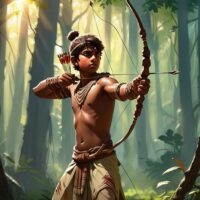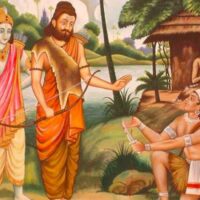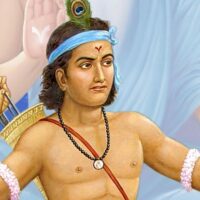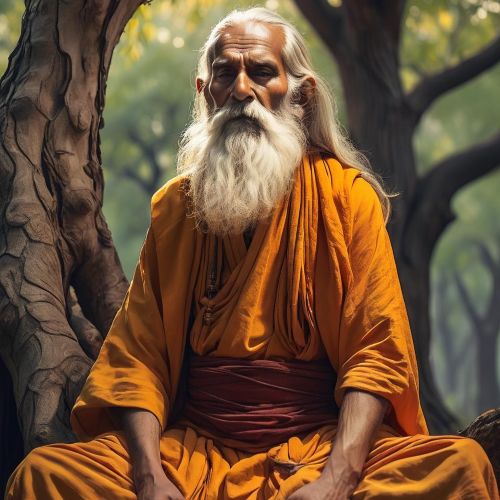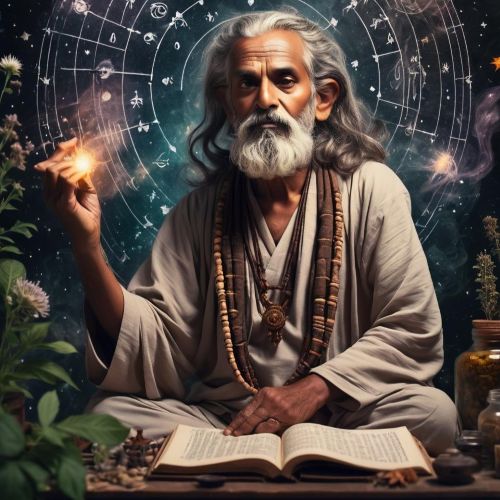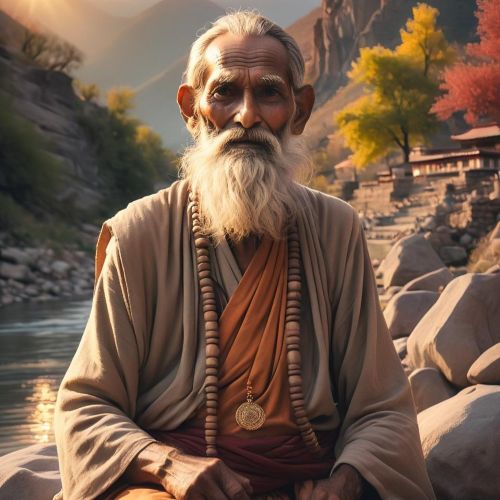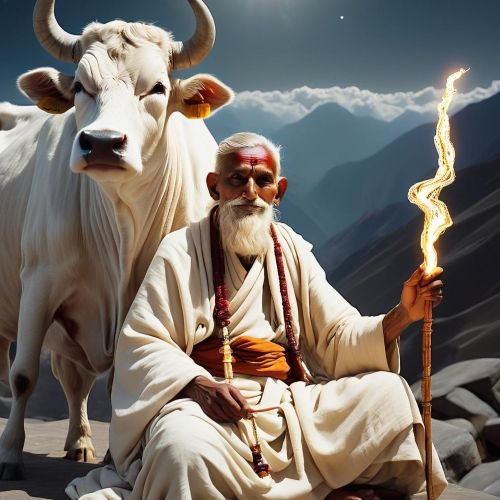Eklavya : The Model Student
Listen
At a glance
| Description | |
|---|---|
| Origin | Indian Mythology |
| Classification | Mortals |
| Family Members | Hiranyadhanus (Father) |
| Region | India |
| Associated With | Archery |
Eklavya
Introduction
Eklavya stands out as one of the most powerful yet tragic characters in the Mahabharata. Though his role is relatively brief in the epic, his story has left an indelible mark on Indian mythology and culture. Born into the Nishada tribe, a forest-dwelling community on the margins of Aryan society, Eklavya grew up with an unshakable dream of mastering the art of archery. Unlike the princes of Hastinapura who trained under Dronacharya, Eklavya faced rejection due to his tribal background. Yet, through sheer persistence and devotion, he taught himself archery by practicing before a clay statue of Dronacharya, whom he revered as his guru. His dedication was so extraordinary that he eventually became a greater archer than many of the royal disciples.
However, his journey is remembered most for his act of supreme sacrifice—offering his right thumb as guru dakshina when Dronacharya demanded it, effectively curbing his abilities. This story is more than a tale of devotion; it reflects the social structures of the time, the injustice faced by marginalized groups, and the triumph of self-learning against all odds.
Physical Traits
The Mahabharata offers little in the way of detailed description of Eklavya’s appearance, but later traditions and folk retellings shed light on how he was perceived. He is often imagined as strong, youthful, and agile, embodying the physical qualities required of a master archer and skilled hunter. His dark complexion and forest attire symbolized his tribal identity, setting him apart from the polished, ornamented figures of the royal court. Some accounts describe him with matted locks and a rugged appearance, a reflection of his austere lifestyle in the wilderness.
Despite the loss of his right thumb, which was crucial for archery, Eklavya did not surrender to despair. He adapted by innovating new techniques, shooting with his remaining fingers, and continuing to excel. His resilience in the face of physical limitation makes him an enduring figure of courage and determination, often celebrated as one of the earliest archetypes of a differently-abled hero who redefined his own limits.
Family
Eklavya’s family background varies across different accounts, though most traditions agree he was the son of Hiranyadhanus, a respected chief of the Nishada tribe. This community, while noble within its own social structure, was considered outside the fold of Vedic orthodoxy, which contributed to his rejection by Dronacharya. Some retellings describe his mother as Shraddha, while others mention he was raised by a foster mother who lovingly called him Damini.
Alternate traditions identify him as the son of Devashrava, making him a cousin of Krishna, though abandoned at birth and raised by the Nishadas. These diverse versions highlight the fluidity of oral traditions, but the common thread is that Eklavya belonged to a marginalized lineage that limited his access to formal training. His father is often portrayed as recognizing his son’s unusual seriousness and meditative nature, qualities that set Eklavya apart from other children who were content with games and hunting. This familial backdrop emphasizes how Eklavya’s ambitions were not just personal but also shaped by his cultural identity and the struggles of his community.
Other names
Though universally remembered as Eklavya, the Mahabharata and regional traditions attribute other names and titles to him. In some passages, his original name is mentioned as Abhidhyumn, while his identity as a Nishada prince earned him the title Nishada Kumara. Because of his upbringing in the forests, he was also known as Naishadi in certain retellings. Modern interpretations sometimes refer to him as Adarsh Shishya—the ideal student—because of his unwavering devotion to his guru, even though Dronacharya never accepted him. These alternative names reflect both his tribal origins and the symbolic role he has come to represent: the student whose determination transcended social boundaries, yet whose fate was determined by them.
Powers and Abilities
Eklavya’s greatness lies not in supernatural powers but in the unmatched discipline of his practice. Denied access to Dronacharya’s direct instruction, he created a clay idol of the guru and dedicated himself to tireless self-learning. His ability to replicate complex techniques purely through observation and devotion speaks of extraordinary mental discipline and focus. Among his most famous feats was silencing a barking dog by filling its mouth with arrows so swiftly and precisely that the animal remained unharmed, a testament to his mastery of speed and accuracy. His skills were so advanced that he could rival, and in some versions surpass, Arjuna, who was celebrated as Dronacharya’s best pupil.
Even after losing his right thumb, Eklavya demonstrated remarkable resilience. Rather than abandoning archery, he retrained himself to use his middle and index fingers, showing not only technical innovation but also unyielding spirit. Folk traditions even suggest that this adapted technique later influenced styles of archery that emphasized dexterity over brute force. Beyond his archery, his deep connection with nature and survival skills as a Nishada added to his versatility as a warrior. Unlike many heroes of the epic who were aided by divine blessings, Eklavya’s abilities were entirely self-earned, making his story uniquely inspiring.
Modern Day Influence
Eklavya’s legacy has transcended mythology to become a cultural, social, and political symbol in modern India. His story resonates strongly with themes of self-education, perseverance, and resistance against systemic exclusion. For marginalized communities, particularly Dalits and tribal groups, Eklavya represents a hero who achieved greatness despite being denied opportunities by the privileged classes. His sacrifice is often seen as a metaphor for the suppression of talent due to caste hierarchy, and his image is invoked in social justice movements as a figure of empowerment.
Educationally, his name has been immortalized through initiatives like the Eklavya Model Residential Schools (EMRS), which provide quality education to tribal students across India. These institutions aim to nurture talent from disadvantaged backgrounds and are a modern embodiment of Eklavya’s spirit—breaking barriers to learning and fostering pride in cultural identity.
Eklavya’s tale continues to inspire literature, theater, and cinema. Writers and playwrights revisit his story to question notions of merit, justice, and authority, while modern films and TV adaptations often highlight his perseverance and moral strength. His name has also entered everyday discourse, with the concept of “Eklavyaism” used to describe self-learning and independent mastery.
In academic studies, Eklavya is frequently analyzed through the lenses of caste politics, pedagogy, and postcolonial critique. His story raises difficult questions: Was Dronacharya’s demand an act of cruelty or adherence to dharma? Should Eklavya’s obedience be seen as noble devotion or tragic submission? These debates keep his narrative alive as a tool for reflecting on ethics, inequality, and the meaning of true greatness.
Related Images
Source
Bhattacharya, N. (2001). Indian Epic Poetry: Rethinking the Mahabharata. Oxford University Press.
Doniger, W. (2009). The Hindus: An Alternative History. Penguin Books.
Hiltebeitel, A. (2001). Rethinking the Mahabharata: A Reader’s Guide to the Education of the Dharma King. University of Chicago Press.
Narayan, R. K. (1978). The Mahabharata: A Shortened Modern Prose Version of the Indian Epic. University of Chicago Press.
Sharma, A. (2011). Classical Hindu Thought: An Introduction. Oxford University Press.
S Brodbeck. (2006). Ekalavya and Mahābhārata 1.121–28. In International Journal of Hindu Studies. https://link.springer.com/article/10.1007/s11407-006-9000-x
Contributors to Wikimedia projects. (n.d.). Ekalavya. https://en.wikipedia.org/wiki/Ekalavya
aol team. (2016). The Story of Eklavya and Dronacharya. https://wisdom.srisriravishankar.org/story-eklavya-devotion/
Ekalavya: Significance and symbolism. (2025). https://www.wisdomlib.org/concept/ekalavya
Frequently Asked Questions
What is lorem Ipsum?
I am text block. Click edit button to change this text. Lorem ipsum dolor sit amet, consectetur adipiscing elit. Ut elit tellus, luctus nec ullamcorper mattis, pulvinar dapibus leo.
What is lorem Ipsum?
I am text block. Click edit button to change this text. Lorem ipsum dolor sit amet, consectetur adipiscing elit. Ut elit tellus, luctus nec ullamcorper mattis, pulvinar dapibus leo.
What is lorem Ipsum?
I am text block. Click edit button to change this text. Lorem ipsum dolor sit amet, consectetur adipiscing elit. Ut elit tellus, luctus nec ullamcorper mattis, pulvinar dapibus leo.
What is lorem Ipsum?
I am text block. Click edit button to change this text. Lorem ipsum dolor sit amet, consectetur adipiscing elit. Ut elit tellus, luctus nec ullamcorper mattis, pulvinar dapibus leo.
What is lorem Ipsum?
I am text block. Click edit button to change this text. Lorem ipsum dolor sit amet, consectetur adipiscing elit. Ut elit tellus, luctus nec ullamcorper mattis, pulvinar dapibus leo.


